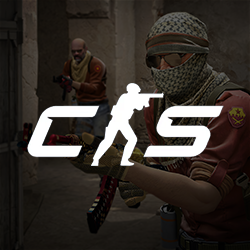Empowering Relationships: BVSM Marriage Services
Explore expert advice and support for successful marriages.
Veto Bid: Where Strategy Meets Subtlety in CS2 Map Choices
Unlock the secrets of CS2 map choices! Discover how strategy and subtlety come together to dominate your next game in Veto Bid.
Mastering the Art of Vetoing: Top Strategies for CS2 Map Selection
In Counter-Strike 2, map selection is a crucial aspect of gameplay that can significantly influence the outcome of a match. Mastering the art of vetoing requires a strategic approach to understand both your team's strengths and weaknesses as well as those of your opponents. Here are some top strategies to consider during the map veto phase:
- Analyze Your Team's Strengths: Evaluate which maps your team performs best on and prioritize those during the selection.
- Know Your Opponents: Research your opponent's preferred maps and consider vetoing those to disrupt their strategy.
- Maintain Balance: Ensure your picks include a mixture of offensive and defensive maps, catering to the playstyles of your teammates.
Another key strategy in the vetoing process is to maintain a flexible mindset and adapt your selections according to the evolving nature of the game. A good map veto strategy is to start by eliminating high-risk maps that could give your adversaries an advantage. Additionally, never underestimate the importance of communication; discussing map preferences with your teammates can lead to a stronger consensus and improve team cohesion. Remember, a well-executed veto not only sets the tone for the match but also allows your team to enter the game with confidence.

Counter-Strike is a highly popular first-person shooter game that emphasizes teamwork and strategy. Players engage in various game modes, with objectives such as bomb defusal and hostage rescue. For those looking to enhance their gameplay and predictions, check out CS2 Guess for tips and resources.
The Psychology Behind CS2 Map Vetoes: How to Outsmart Your Opponents
The process of map vetoes in CS2 can often feel like a game of psychological chess, where each player's decision influences the other's strategy. Understanding the underlying psychology behind these vetoes can give you a critical edge. Players typically approach vetoes with a blend of mind games and strategic foresight. It’s essential to analyze your opponents’ past behavior and choices in map selection to predict their reactions and plan your counter-vetoes effectively. By creating a mental profile of your opponent, you can aim to eliminate maps that they excel at while preserving your preferred battlegrounds.
To truly outsmart your opponents during the map veto phase, consider employing some psychological tactics. For instance, you might deliberately ban a map you’re not particularly afraid of to mislead your opponent into thinking you have a strong preference for their remaining options. Additionally, employing reverse psychology can be effective; if you sense they have a strong affinity for a specific map, you might veto it last, anticipating they’ll think differently about what you truly desire. Always remember, the psychological warfare of map vetoes is not just about banning maps; it’s about controlling the narrative of the game before it even starts.
Key Factors to Consider When Vetoing Maps in CS2: An In-Depth Analysis
When it comes to vetoing maps in CS2, several key factors must be meticulously evaluated to ensure a well-rounded decision. Firstly, map balance plays a crucial role; this involves assessing whether each team has equal opportunities for both offensive and defensive play. A well-balanced map enhances competitive integrity and keeps matches engaging. Additionally, player comfort is essential. Many players have their favorite maps where they excel; thus, vetoing a map that a majority of players dislike can lead to a less enjoyable experience. Conducting surveys or discussions within your team can provide valuable insights on player preferences.
Another important factor is the meta relevance of a map. With the ongoing evolution of gameplay strategies, some maps may become outdated, leading to a less engaging experience. Keeping track of the current meta and how maps resonate with it can guide your vetoing process. Finally, consider the community feedback regarding specific maps. Insights from forums, social media, and competitive play can reveal trends and issues specific to maps, thus aiding in making informed decisions. By thoroughly evaluating these factors, you can ensure that your map selection process in CS2 is strategic and reflective of both player preferences and competitive viability.